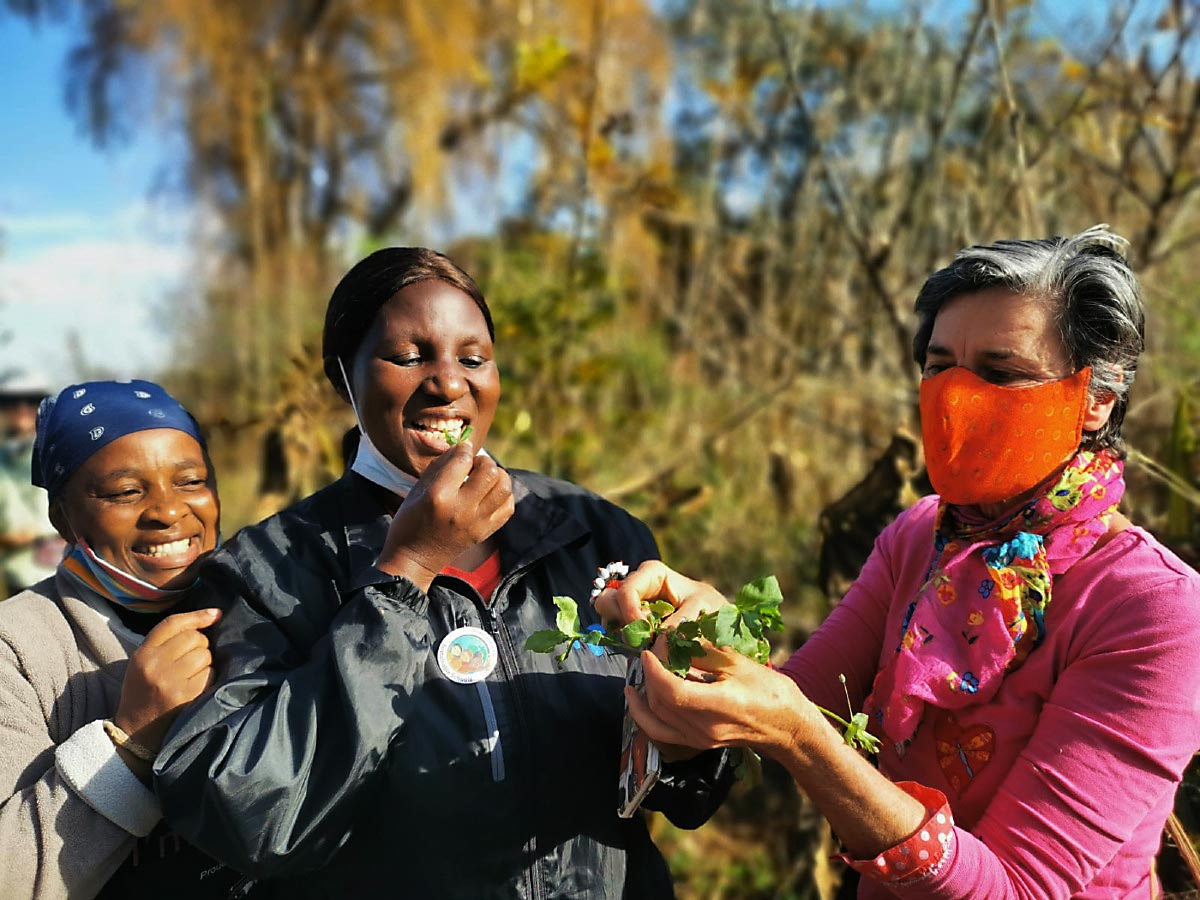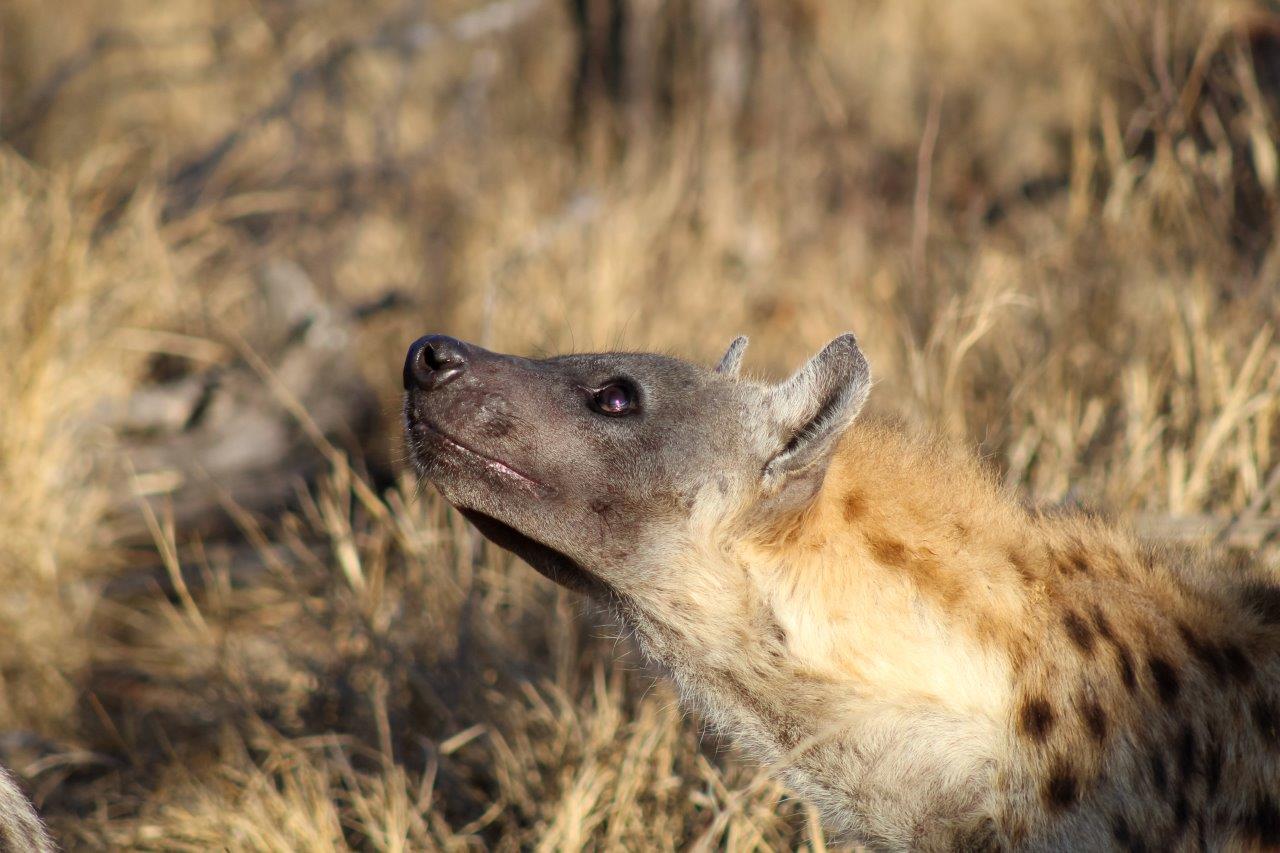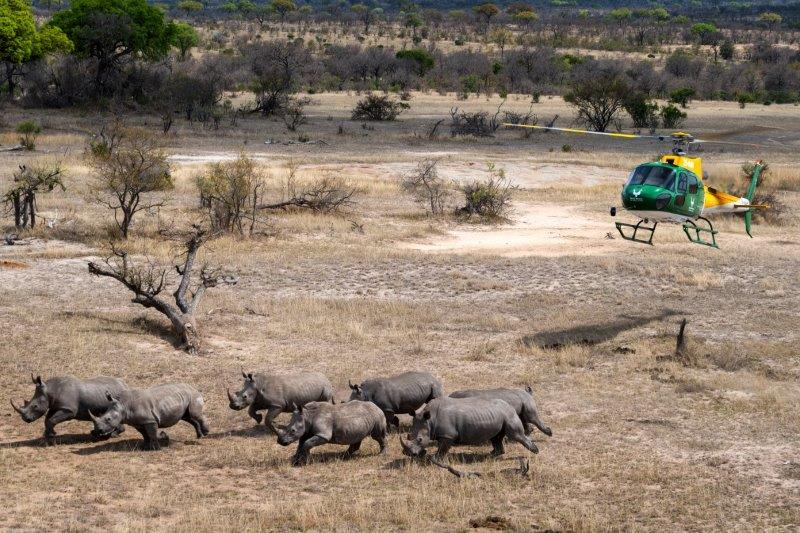We are often in a rush to rid our gardens of blackjacks, stinging nettles and a bunch of other bitter things. But Julia Invernizzi wised up on a recent walk.
First published in the Daily Maverick
You don’t know what you don’t know, so the expression goes, but sometimes it doesn’t work that way.
Witness a recent public holiday gathering of 26 KwaZulu-Natal teachers at the Umngeni River for an edible weed walk lead by vocal slow food activist and passionate locavore, Nikki Brighton.
A stroll along the river in the Howick Conservancy would take many of the teachers into forgotten childhood memories, of days spent tasting and foraging for local wild food: skills taught to them by their elders.
For Brighton, food needs to be local, seasonal and better still, free.
Packed with an assortment of nutrients, trace minerals and vitamins (often lacking in shop bought, commercially grown vegetables), a diet supplemented with wild weeds ticks all these boxes.
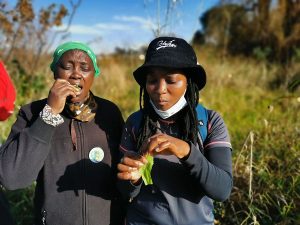
Bitter’s better
“There is a belief that food must taste delicious to be good. We have become used to the addictive sugars and salts from processed food but often it’s the bitter taste of weeds that provides the best nutrition, aiding digestion and the absorption of nutrients,” said Brighton.
For teaching assistant Nkanyiso Khambale, of Obed Mlaba school in Inchanga, Brighton’s words rang true. Khambale grew up in rural Kwaswayimane, east of Pietermaritzburg, and was easily able to identify the imbati (stinging nettles), uqadolo (blackjack) and imbuya (amaranthus) he collected as a child to add to the family’s imfino (indigenous spinach mix).
Antonia Mkhabela, a teacher from Shea O’Connor Combined School in Nottingham Road, said: “We had a nice healthy breakfast of weeds, it was absolutely amazing – the sweetness of the gooseberries, bitterness of the blackjack leaves, reminded me of my childhood.”
Sthembile Shabalala, from KwaNgubeni Primary school in Pietermaritzburg, was enthusiastic to be learning about Centella (Gotu Kola).
“We undervalue our common weeds, spending our whole lives trying to pull them out in the garden. But now that I have learned that these weeds are marketed in the pharmacy as mental alertness tonics; I’m going to make my own tinctures for a fraction of the price,” said Shabalala.
And Shabalala is not the only one wising up to herbs and weeds that were in the past dismissed or looked down upon as a poor-man’s food; many were now making a big comeback on the menus of trendy restaurants and cafes. Packed with nutritional goodness, flavonoids and carotenoids, they boost our immune response – especially important in these Covid-19 times.

River health
After an enlightening walk and talk, the teachers made their way to the upstream river causeway to learn about the mini stream assessment scoring system tool. It uses a net and a simple dichotomous, identification key and teachers learnt to easily identify the different macro-invertebrates’ sub-classes as an indication of the quality of the water and general health of the river.
It’s also a way for children as young as three to get involved in citizen science by monitoring their local rivers and from there hopefully participating in efforts to protect their water sources.
The outing was facilitated by the Global Search for Sustainable Schools project, implemented by environmental NGO, African Conservation Trust.
Trust staff running the workshop were impressed at how the teachers literally immersed themselves in the learning process. No time was lost taking off high heels to wade into the rocky river, with some even electing to walk 2km to the scout hall for their next session rather than take their cars round.
With everyone refreshed with sunshine and clean air, Julia Invernizzi, of the African Conservation Trust, and Bridget Ringdahl, of NGO Water Explorer, gave a short show-and-tell on how to use the herbs and weeds collected to make tinctures and healing or moistening creams.
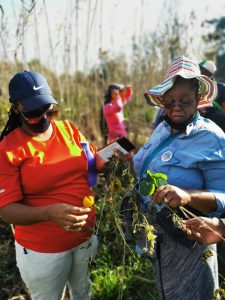
Practice makes perfect
Mdu Mchunu, an environmental facilitator with the trust, felt putting what had been seen and demonstrated into practice was the key to learning. “We learned the theory of nutrition and weeds on the walk but bringing it back into the home to make products is where the real learning takes place.”
The teachers were given their final session of the day by FULLsome founder and nutritional consultant, Kathryn Fourie. Many of the teachers were intrigued to learn from Fourie that contrary to the traditional food pyramid, which puts carbohydrates at the base and has animal proteins as an essential, the majority of a healthy diet should consist of a multitude of greens and whole grains.
Fourie said this provided a new framework for allocating our food portions. One half of your plate should consist of greens, one quarter sugary starchy veg (usually white or yellow) and one quarter, protein – and this need not be animal based.
Diet and disease
“With the average American eating only three to six different plants out of a recommended 30-40 varieties a week it is little wonder that more people have diet-related lifestyle diseases. And it’s not very different to the situation in South Africa either,” said Fourie.
A delicious homemade bean burger lunch followed by a small prize rounded off the day. Recognition was given to teachers whose passion and efforts contributed to the success of the Global Search for Sustainable Schools Water Explorer environmental schools programme.
One lucky educator, Simangaliso Dlamini received a blackbean burger kit sponsored by FULLsome, other educators won upcycled bags made from old banners, sponsored through the Solon Foundation, while others were delighted to receive their own copy of the Mnandi a taste of Mphophomeni recipe book compiled by Nikki Brighton with contributions from the township near Midmar Dam that gives the book its name. – Roving Reporters
- The Global Search for Sustainable Schools project in South Africa is funded by the Ministry of Environment, Japan and the HCI Foundation. Julia Invernizzi is an environmental educator at the African Conservation Trust. This story forms part of Roving Reporters biodiversity writing project supported by the Earth Journalism Network.
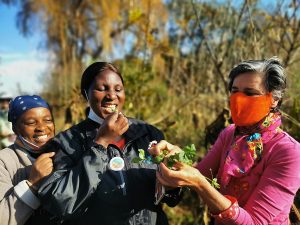
Now read… Abundance during lockdown: A guide to growing food from scraps
